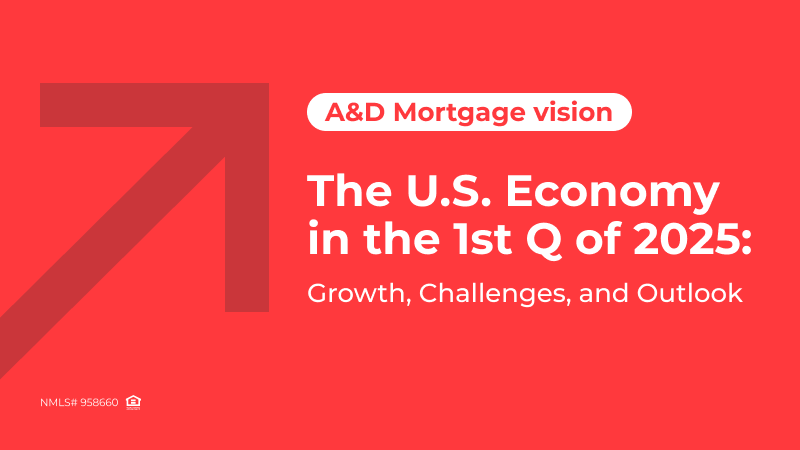
The first quarter of 2025 presented a mixed picture of the U.S. economy and housing market’s future. Tight monetary policy and uncertainty about the impact of Trump’s tariffs on economic growth and inflation became the main issues of the first quarter. AD Mortgage analysts examined the US Economy Q1 2025 and examined how the new U.S. administration’s policies will affect the markets for the rest of the year.
Economic Growth
Real Gross Domestic Product (GDP) grew at an annualized rate of 2.4% in Q4 2024, according to data published by the Bureau of Economic Analysis on March 27. This figure is below the 3.1% pace seen in Q3 2024 but exceeded analysts’ expectations. However, some economists believe that new tariffs could significantly slow GDP growth in 2025. Officials have confirmed this concern but noted that any negative effects would be temporary and could lead to greater growth in the long term.
Labor Market
The job market remained a bright spot at the beginning of the year. The Bureau of Labor Statistics reported on March 7 that the unemployment rate held near historic lows of 4.1% year-over-year in February, while non-farm employment increased by 151,000 jobs during the month, almost in line with analysts’ expectations. A strong labor market continues to support current Federal Reserve policy amidst high inflation.
Inflation
The Consumer Price Index (CPI) rose at an annual rate of 2.8% in February, according to statistics published by the Department of Labor on March 12. This rate is down from previous highs but remains above the target rate of 2%. The Federal Reserve’s preferred inflation indicator—the Personal Consumption Expenditures (PCE) price index—also stayed elevated, reaching 2.5% year-over-year based on data from the Department of Commerce on March 28. Persistently high inflation and potential additional pressure from import tariffs are forcing the Fed to maintain tight monetary policy.
Federal Reserve
At its meeting on March 19, the Federal Reserve decided to maintain its target range for the federal funds rate at 4.25% to 4.50%. However, it announced plans to slow Quantitative Tightening (QT) from $25 billion to $5 billion starting April 1, reducing liquidity pressures in financial markets. Market participants closely monitored Fed Chair Jerome Powell’s statements for signals about potential rate adjustments later in the year. They now anticipate two rate cuts by the end of 2025.
Housing Market
Elevated interest rates continued to pressure the housing market. However, the Mortgage Bankers Association reported a reduction in 30-year mortgage rates from 6.97% to 6.71% between January 2 and March 26. During this period, the Mortgage Market Index rose from 174.9 to 247.5 points due to increased applications in both purchase and refinance sectors; their indices increased from 136.7 to 155.8 and from 395.1 to 752.4, respectively.
Nationally, home prices grew by 4.8% year-over-year in January, though some markets experienced price corrections due to overbuilding. Both existing and new home sales declined during Q1.
Outlook for the Rest of 2025
Looking ahead, steady but slower economic growth is expected throughout the year. Potential Federal Reserve rate cuts could lower borrowing costs and support both overall economic activity and housing markets specifically. Uncertainty will persist as new tariffs are imposed by the U.S. administration, which has indicated flexibility depending on international responses.
AD Analytics Team


